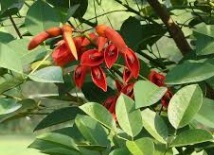Before entering fully into the meaning of the term legumes, we are going to proceed to know its etymological origin. In this case, we have to emphasize that it is a word that derives from Latin, specifically it derives from "leguminosus", which is the result of the sum of two lexical components of said language:
-The noun "legumen, leguminis", which can be translated as "legume".
-The suffix of abundance «-osus».
This is how a certain type of plant is classified.
 Legumes belong to the group of angiosperms : these are phanerogams that develop ovules enclosed in their carpels. As phanerogams, in turn, they have reproductive organs that can be seen in the shape of a flower , where fertilization takes place. Legumes, on the other hand, are considered dicotyledonous since their embryo has two cotyledons.
Legumes belong to the group of angiosperms : these are phanerogams that develop ovules enclosed in their carpels. As phanerogams, in turn, they have reproductive organs that can be seen in the shape of a flower , where fertilization takes place. Legumes, on the other hand, are considered dicotyledonous since their embryo has two cotyledons.
It can be a bush , a herb , a bush or even a tree . Its leaves are usually compound and alternate, with flowers that are often butterfly-shaped. Another of the most salient characteristics of legumes is that they produce a legume fruit, which grows in a pod.
It is estimated that there are more than seven hundred genera of legumes distributed almost all over the world.
It is important to know, in addition to everything stated above, that it is currently estimated that there are about 19,000 species of legumes around the world. However, among the most well-known and significant are the following:
-Alfalfa, which is a plant that can reach up to 60 centimeters in height and is recommended to be grown in territories with cold climates. It is considered to be very rich in vitamins and iron, for example.
-The peanut, which is identified by its yellowish stem and because it can reach a height of up to 80 centimeters. It is planted in spring and is indicated for areas where there is a warm climate.
-The pea, which is a plant rich in fiber and protein. It falls within the so-called climbing legumes and is ideal for planting in places where it is moderately cold.
-The chickpea, which is a legume that can reach 50 centimeters in height and has rounded pods where around two or three seeds can be found.
Broad beans, lentils, beans and soybeans are other of the best-known legumes.
Thanks to legumes, they constitute a very important component of the human diet because they contain high levels of fiber, carbohydrates and proteins.
Beyond food, legumes are also used by man to obtain gums (as in the case of Acacia senegal ) and dyes ( Indigofera suffruticosa ) and for ornamental purposes ( Erythrina crista-galli ).
In the field of agriculture and livestock , finally, legumes such as alfalfa and various types of clover are beneficial to improve the quality of the soil and to nourish sheep and cattle (optimizing reproductive efficiency and increasing the production of meat and milk for its properties).
